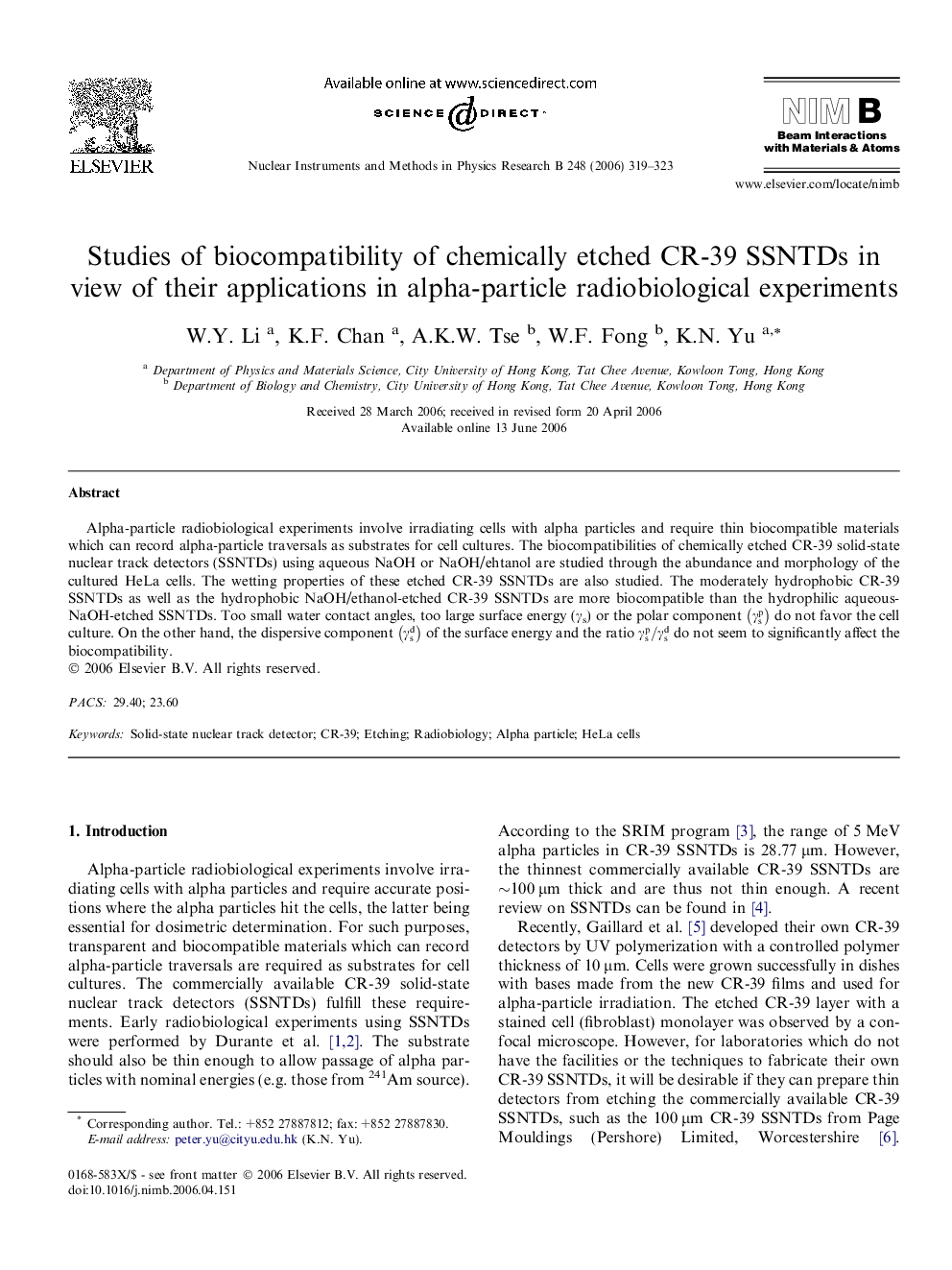| Article ID | Journal | Published Year | Pages | File Type |
|---|---|---|---|---|
| 1686896 | Nuclear Instruments and Methods in Physics Research Section B: Beam Interactions with Materials and Atoms | 2006 | 5 Pages |
Alpha-particle radiobiological experiments involve irradiating cells with alpha particles and require thin biocompatible materials which can record alpha-particle traversals as substrates for cell cultures. The biocompatibilities of chemically etched CR-39 solid-state nuclear track detectors (SSNTDs) using aqueous NaOH or NaOH/ehtanol are studied through the abundance and morphology of the cultured HeLa cells. The wetting properties of these etched CR-39 SSNTDs are also studied. The moderately hydrophobic CR-39 SSNTDs as well as the hydrophobic NaOH/ethanol-etched CR-39 SSNTDs are more biocompatible than the hydrophilic aqueous-NaOH-etched SSNTDs. Too small water contact angles, too large surface energy (γs) or the polar component γsp do not favor the cell culture. On the other hand, the dispersive component γsd of the surface energy and the ratio γsp/γsd do not seem to significantly affect the biocompatibility.
